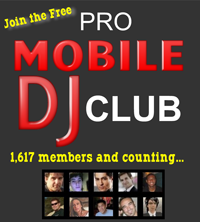by Dave Austin
Back in the 1960s, amid the “British Invasion” and the other revolutionary changes going on in the pop music scene, a new form was evolving in Jamaica. First called “ska” or “rocksteady,” it quickly evolved and became known as “reggae” – a word meaning “ragged” or “ragged clothing.” However, Bob Marley is also said to have claimed that the term came from the Spanish, meaning “the king’s music.” As musical term, reggae first appeared in print with the 1968 rocksteady hit, “Do the Reggay” by the Maytals.
Reggae’s Influences
While strongly influenced by traditional African, American jazz and old-time R&B, reggae owes its direct origins to the progression of ska and rocksteady in 1960’ Jamaica. Ska came out of the studios of the late 50s and is characterized by a walking bass line accented by guitar and piano rhythms on the offbeat, and sometimes jazz-like horn riffs. The music was extremely popular with the Jamaican rude boy subculture and also gained a large following among the Mods in Britain by the mid-60s.
Playing their ska records at half speed, rude boys preferred to dance slower as part of their tough image. Before long, musicians picked up on the slower beat while emphasizing the walking bass and offbeats. This variation was named rocksteady and lasted until about 1968 when musicians kicked up the tempo again and added more effects, leading to the birth of reggae. It was also the year American singer Johnny Nash released “Hold Me Tight,” putting reggae on the U.S. charts for the first time. Around this time, reggae influence began to infiltrate mainstream rock music (“Ob-La-Di, Ob-La-Da” by the Beatles).
Popular Reggae Artists
The most successful band to make the transition through all the phases of early Jamaican pop music was The Wailers – Bob Marley, Peter Tosh and Bunny Wailer. Other notable pioneers include Prince Buster, Desmond Dekker and Jackie Mittoo.
Fast forward to 1972 and the film “The Harder They Come” starring Jimmy Cliff: This film generated great interest and popularity for reggae in the U.S. and Eric Clapton’s cover of Marley’s “I Shot the Sheriff” vaulted reggae into the mainstream. By the second half of the 70s, punk shuffled onto the scene and reggae was a notable influence as punk DJs played reggae songs during their sets and some punk bands’ music was reggae-influenced. Continuing through the 1980s, reggae enjoyed a revival in the U.K. with such groups as Steel Pulse, UB40 and Musical Youth. Apparently determining that the musical genre was going to be around for a while, the Grammy Awards introduced the Best Reggae Album category in 1985.
Sub-Categories of Reggae
Over the years a number of sub-categories have evolved including roots reggae, dub, rockers, lovers rock, dancehall, ragamuffin – also called “raga” – raggaeton and several others. However, over these same years reggae influences have spread to the Americas where the music is denoted as “Reggae en Espanol,” in Africa as “Nigerian Reggae,” in Asia and the Pacific as “Pinoy reggae” and in Australia as “desert reggae” in which lyrics are often sung in Australian Aboriginal languages.
Whatever it’s called and wherever it’s played, reggae almost always bring them to the dance floor. With a steady and infectious backbeat and just-right tempo, it’s hard not to move to this music.
Dave Austin – Music Professor
Dave Austin began his career at age 13 at a small, hometown radio station. He went on to graduate from the University of Southern Mississippi with a Bachelor’s degree in broadcasting.
Since that time, Dave has been a mobile and radio DJ, radio station Program Director, and a TV news reporter and anchorman. He has also done voiceover work for documentaries and commercials.
In 1986 Dave’s longtime passion for music prompted him to start “Southern Celebrations DJs,” a multi-system mobile entertainment company serving clients in Tennessee, Northern Georgia and Northern Alabama.
You can email him c/o [email protected] or visit his website – Moonlight Mobile Music.
![]() Tweet This Post
Tweet This Post








